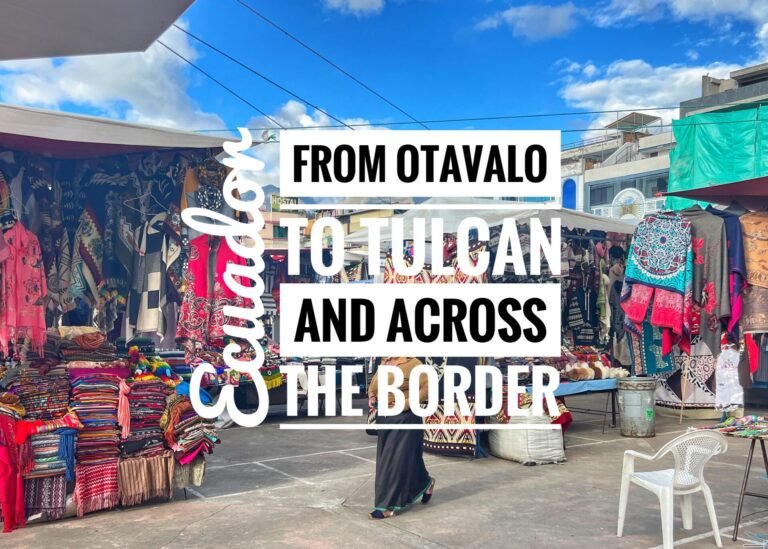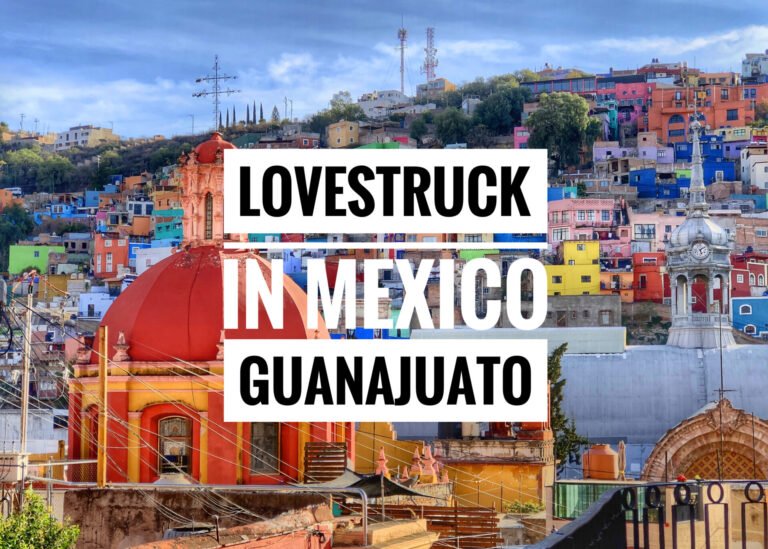
Although we found some charm, most people don’t swoon over Guayaquil, which is Ecuador’s second largest city of 2.7 million people and the commercial heart of the country. Instead, it’s more functional with an international airport which often serves as the jumping off point for tourists heading to the Galapagos Islands. The city, which is perched on the edge of the wide and debris-blanketed Guayas River, is allegedly named after the great Puna Chief who bravely fought the Incas, and his right hand woman, Quill. Chief Guayas is said to have killed her to keep her from getting murdered by conquistadors. Ah, love in Ecuador indeed.

The day we arrived, we flew two hours straight south to Ecuador from Panama (because Panama is east/west oriented and not north/south as your geographic brain wants you to think.) We chose Ecuador as our next seven-week jaunt because of its close proximity to Panama and the reasonable cost of tickets. (Free.) We were welcomed to the steaming tropical city three hours behind our original arrival time due to a mechanical error on the original plane. This granted us free linner in airport vouchers, a delightful pair of iceberg lettuce salads from Quiznos. Finally, we crossed the equator into Ecuador. Wait. Oh. That’s why it’s called that 🤨🤣

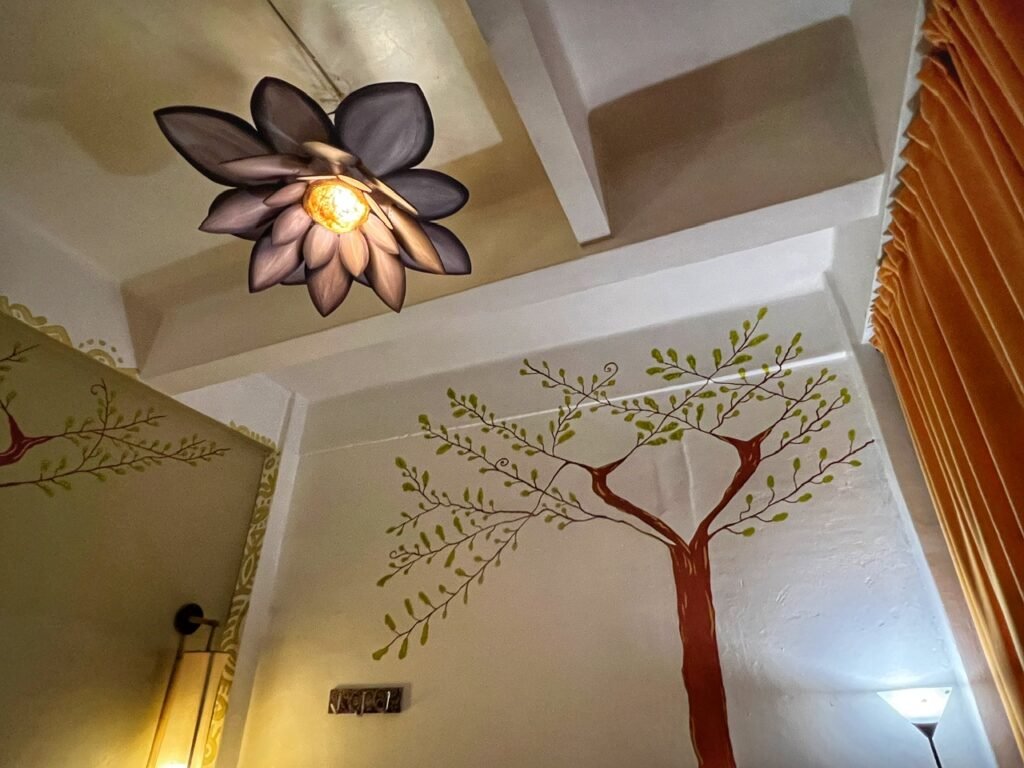
We rolled into 87% humidity, hopped in a $6 cab ride (as opposed to $20 that morning in Panama) and arrived to Manso Boutique Guesthouse. It has a fun bohemian vibe and is in a great location right on the Malecón. The best part? You guessed it. Free! We got it using carrot cash credits on Hopper. If you’re interested, https://sharing.hopper.com/invite/gregc3c2.
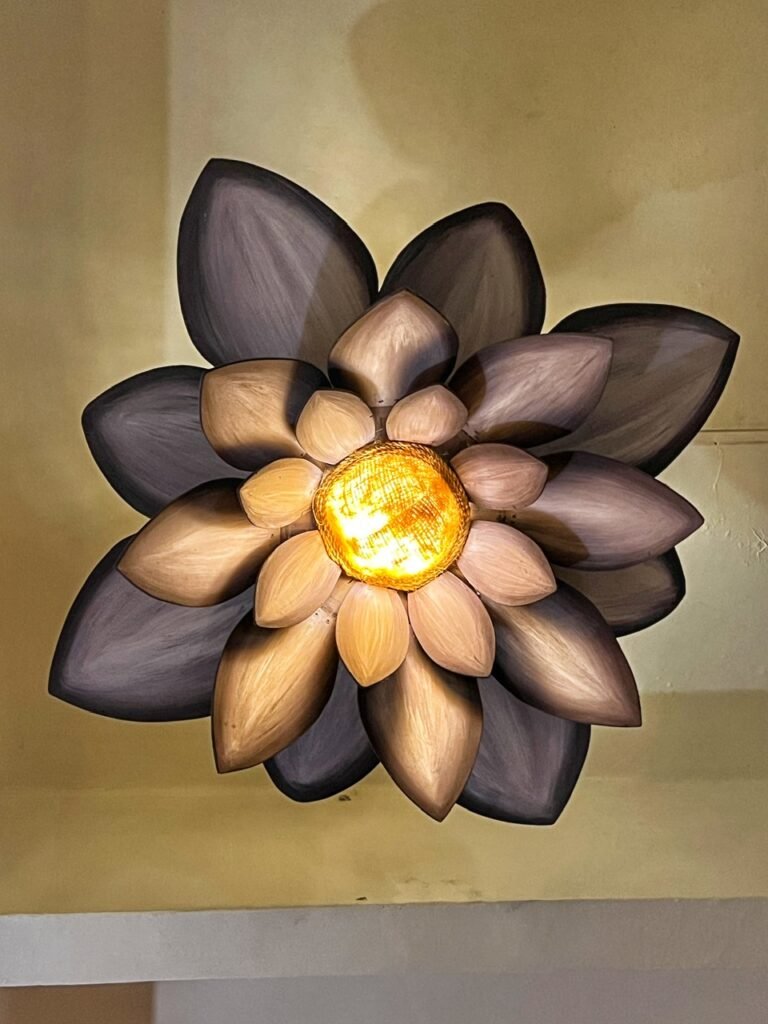
What a fun light!
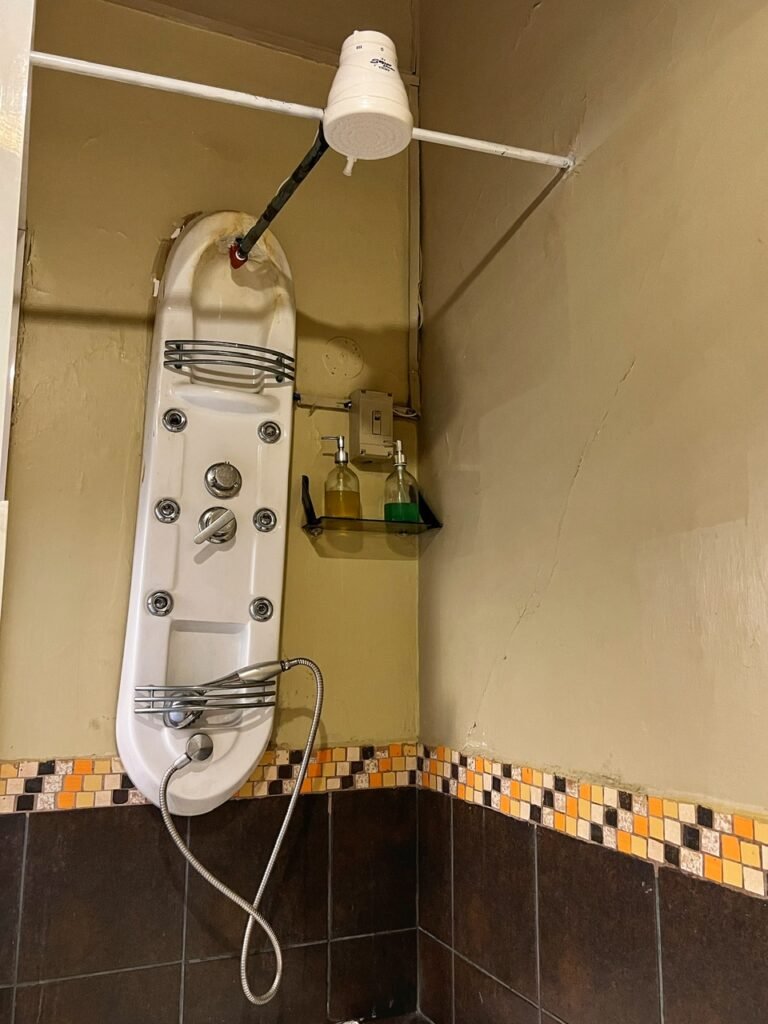
That’s one complicated looking shower, with electric wires sticking out the top. This is a normal thing in many countries. No te preocupes!
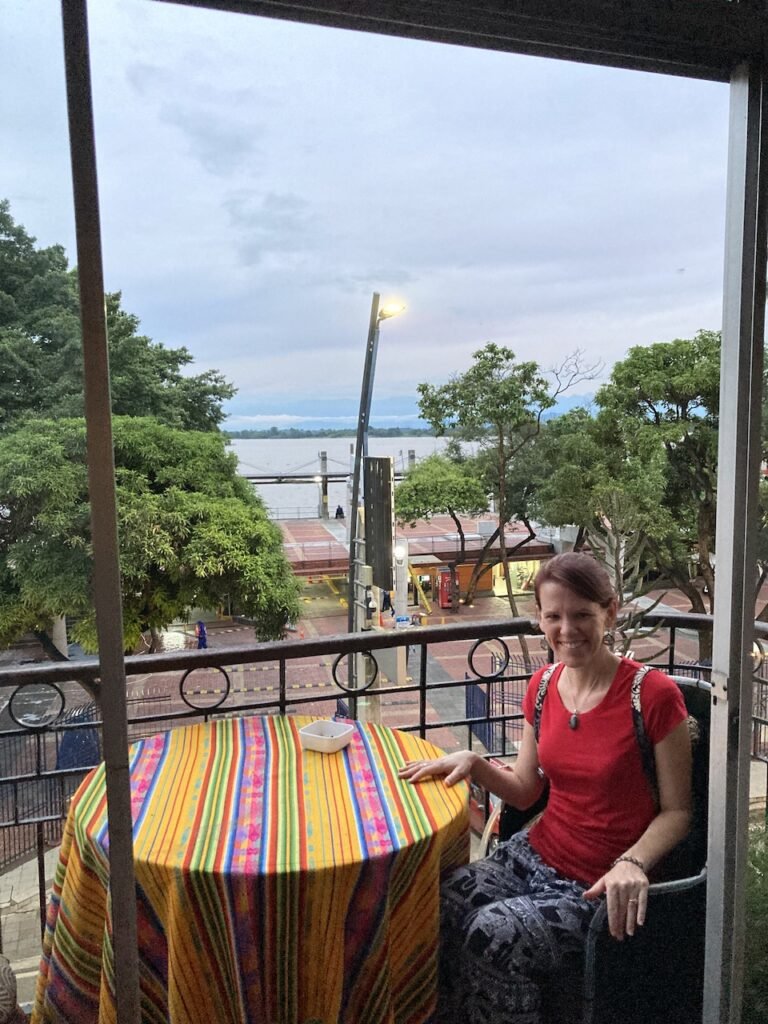
The balcony overlooking the Malecón! Time to go explore!
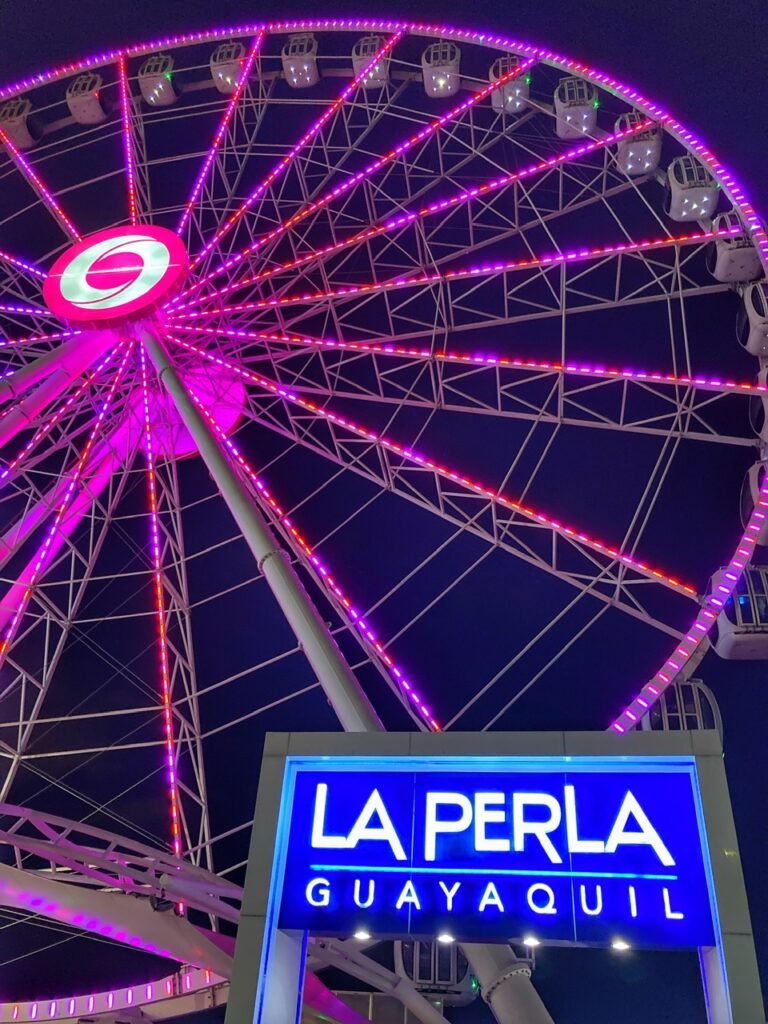
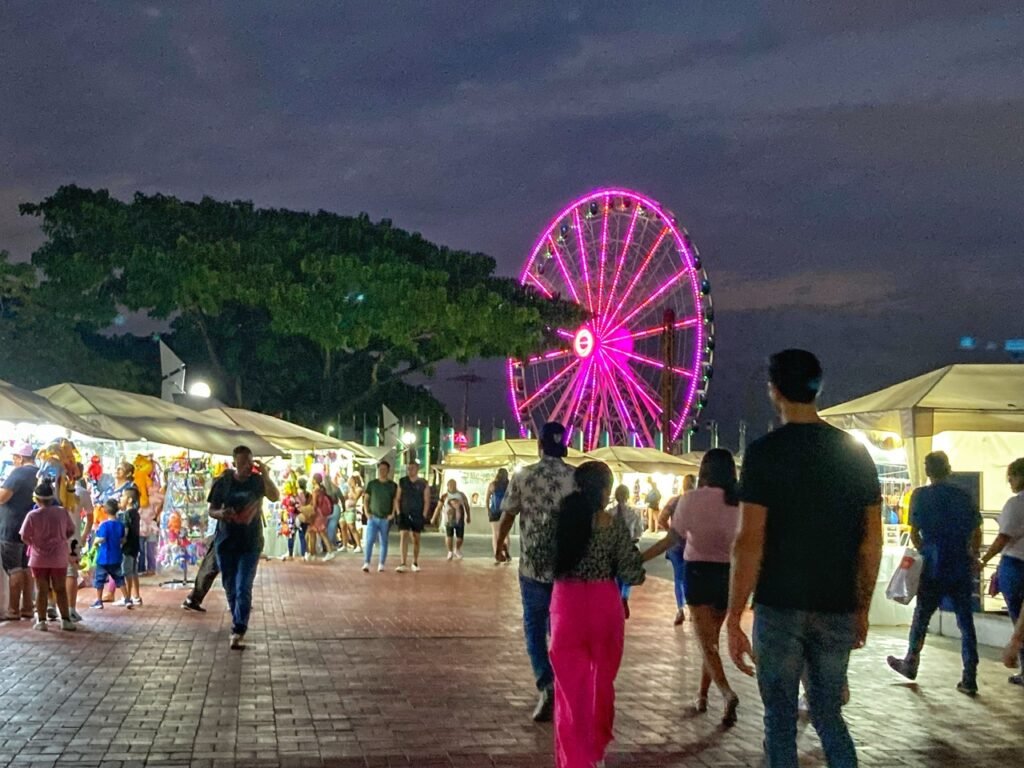
That night, we decided “be romantic” and ride our first sky wheel, called La Perla, on the city’s very fetching Malecón 2000 walkway, which is one of South America’s most extensive urban renewal projects. This gated space is police protected and filled with restaurants, tiendas, a museum, rides and parks. Of course we’ve had the opportunity to ride many of these in our lives but at the going rate of $30+ in some places, we’d rather pull our nails out. But $3.50 each?! Umm. Ok.
La Perla soars 57 meters above the city–equal to an 18-story building—and boasts 36 cabins that can hold a total of 216 people. The ferris wheel turns at a maximum speed of 10 kilometers per hour for a total ride time of approximately 12 minutes and 24 seconds. Also, the many stalls on the Malecón. Even on a Monday night, the area was packed with families.
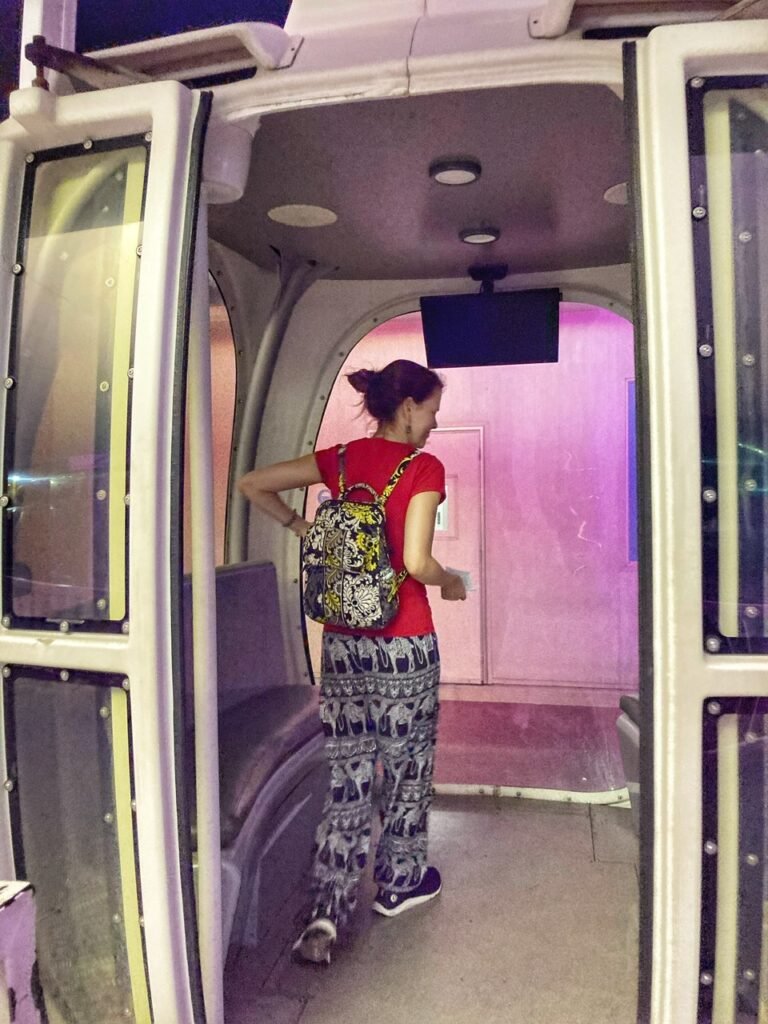
Mandy climbs aboard.
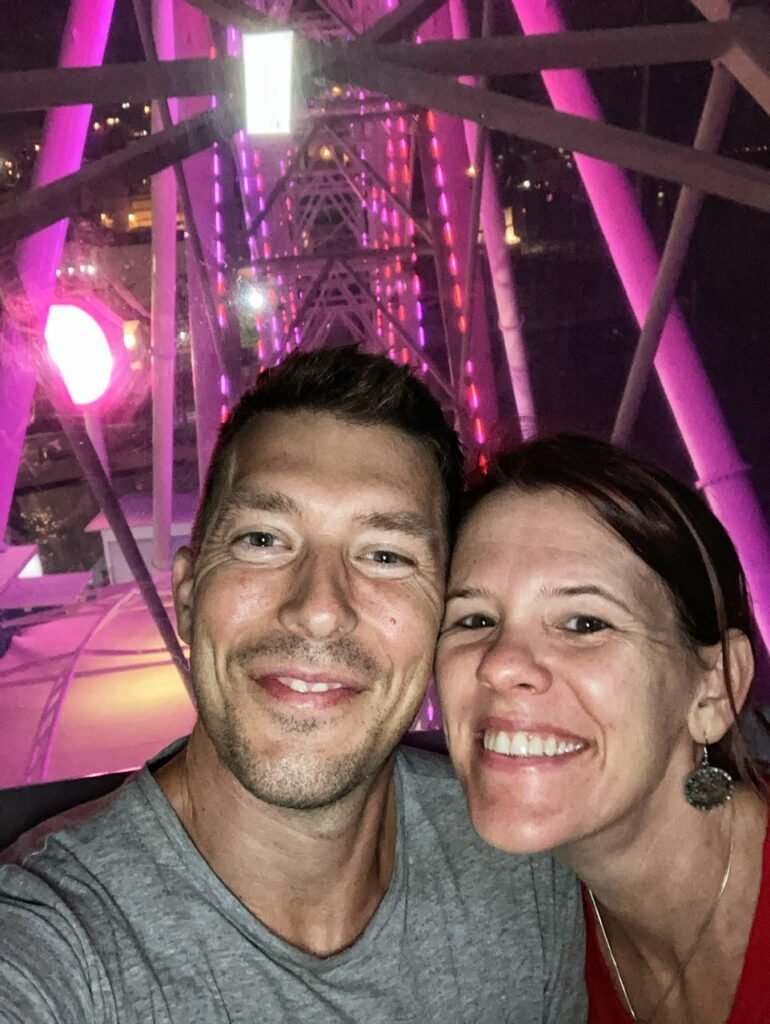
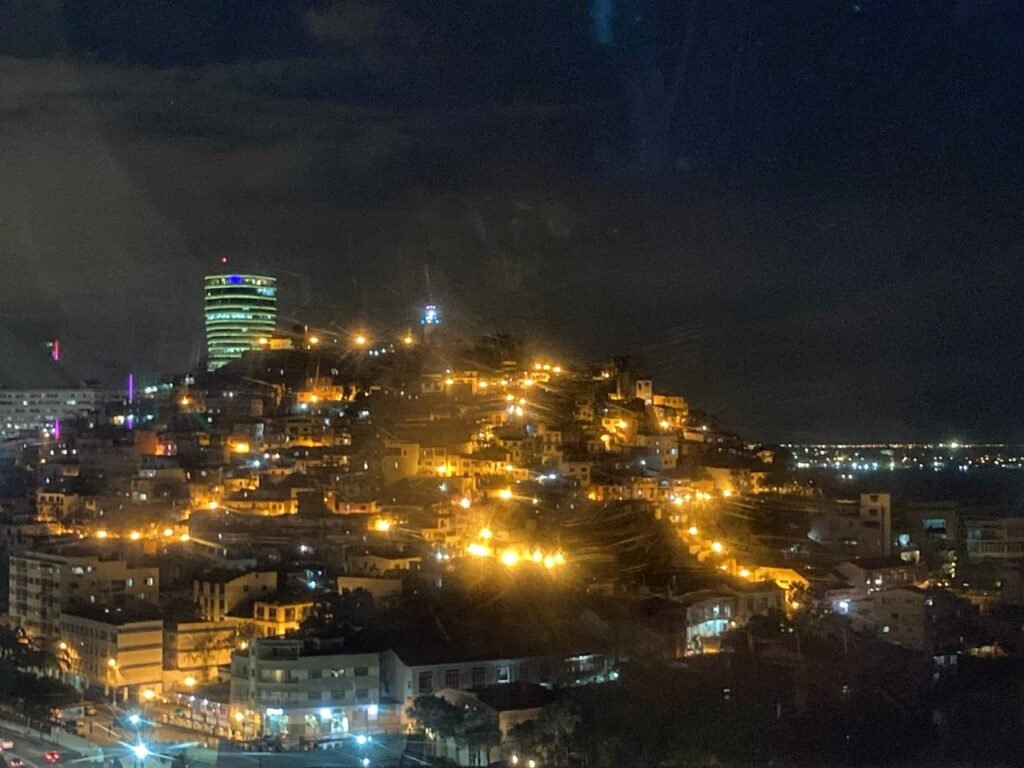
We may have been the only ones on the entire wheel. We loved seeing the iconic Las Peñas neighborhood from atop the wheel.
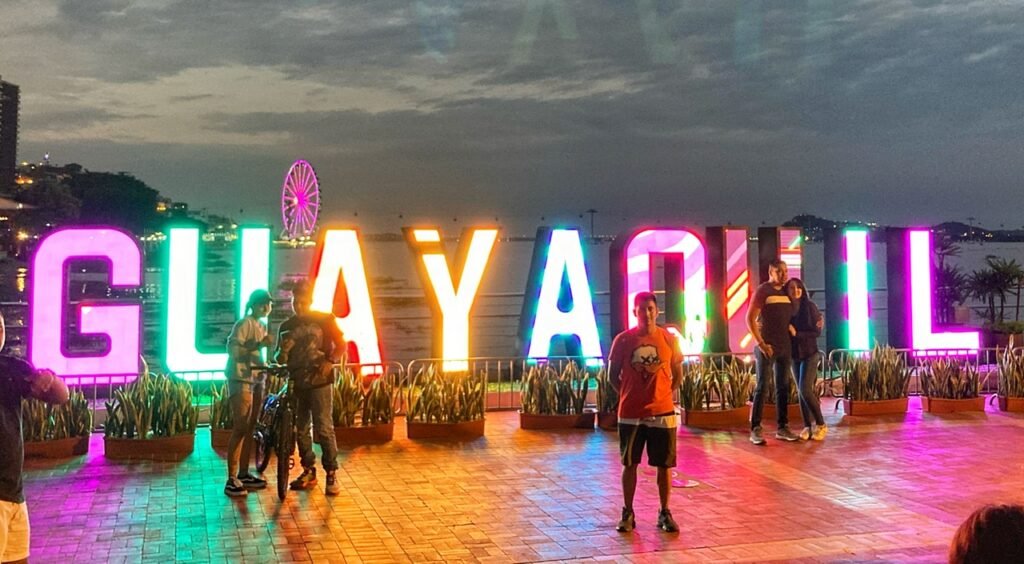
The city also had one of the more luminescent city signs we’ve seen.
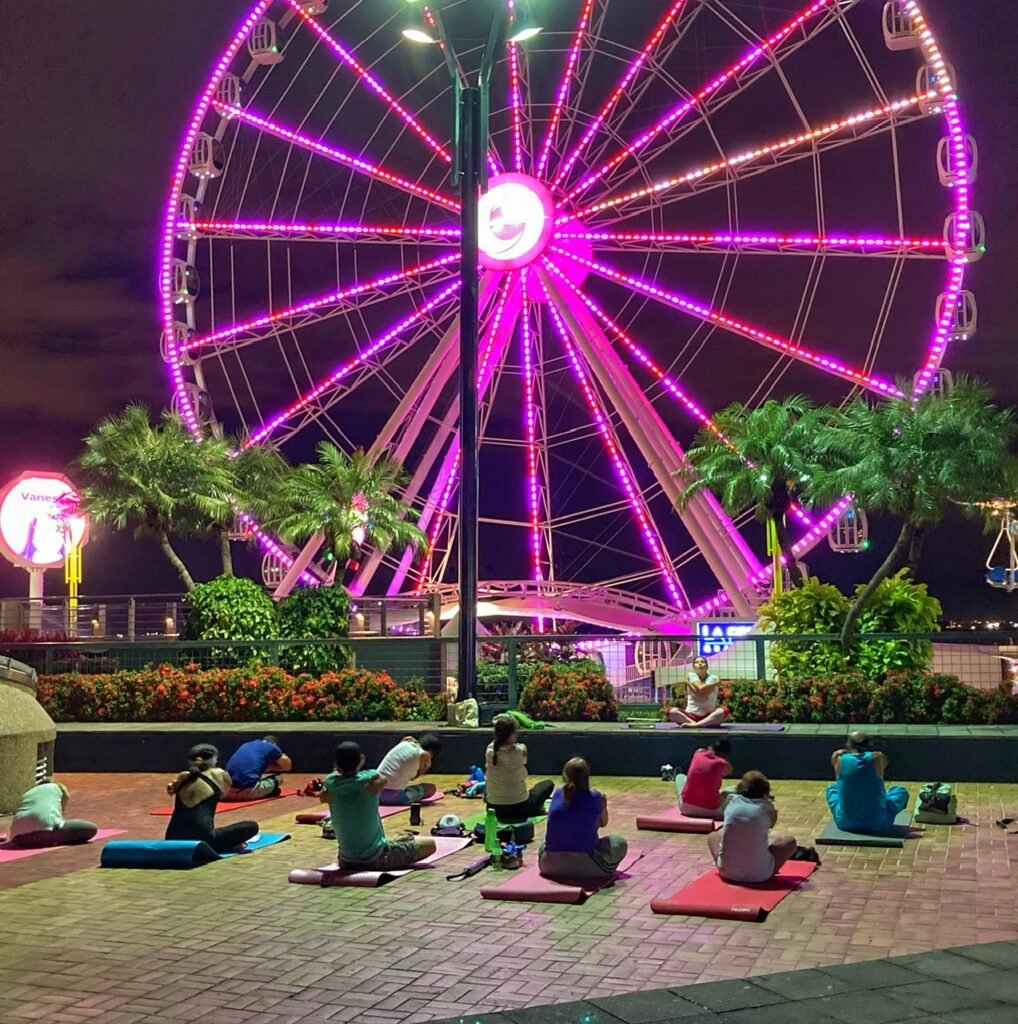
What goes better with a bustling Malecón and lots of lights than yoga?? 🤣 Keep it up ladies!
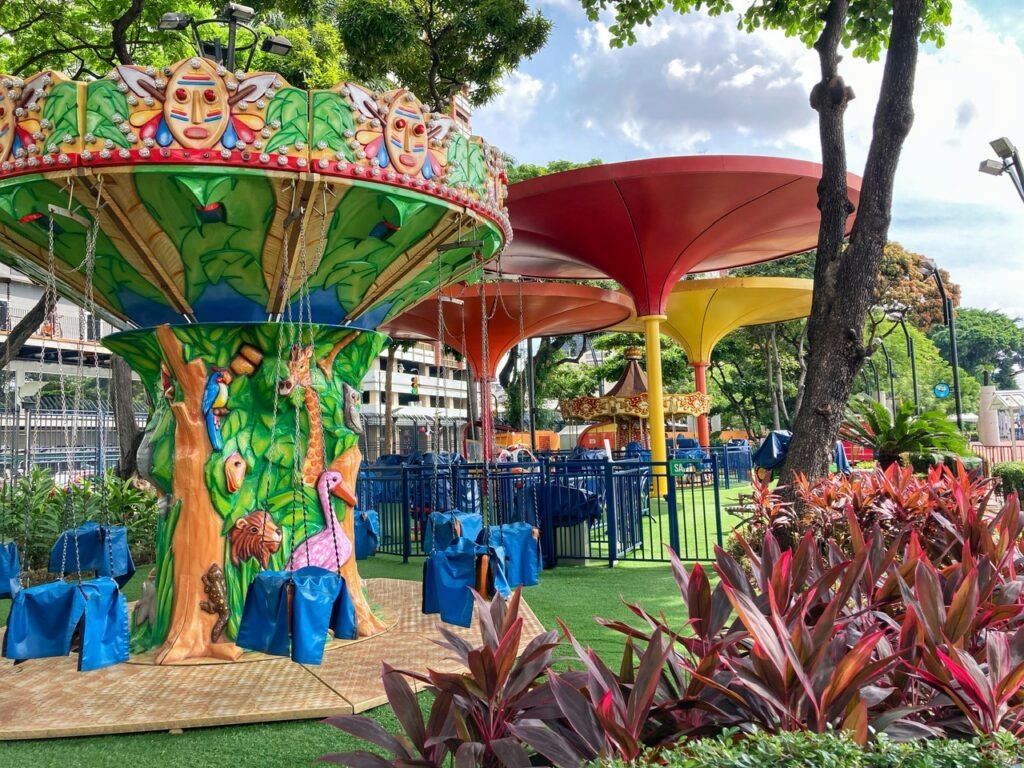
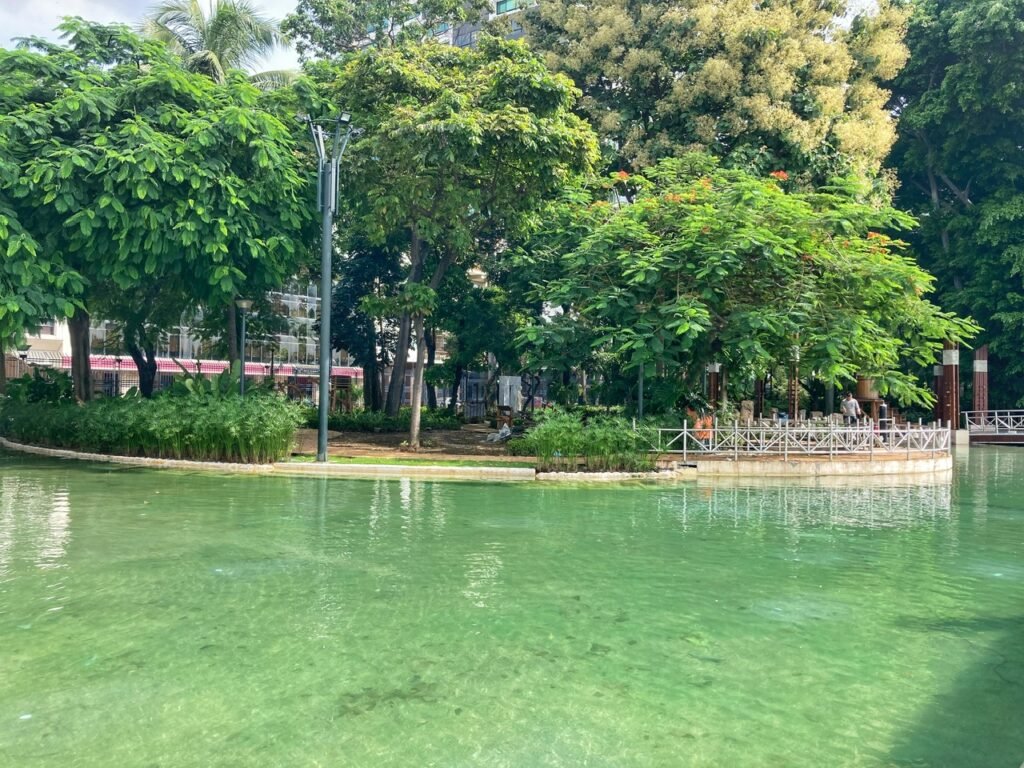
By morning, it was as calm as it could be. The bumper boat pond was being cleaned. Everything was being cleaned in fact.
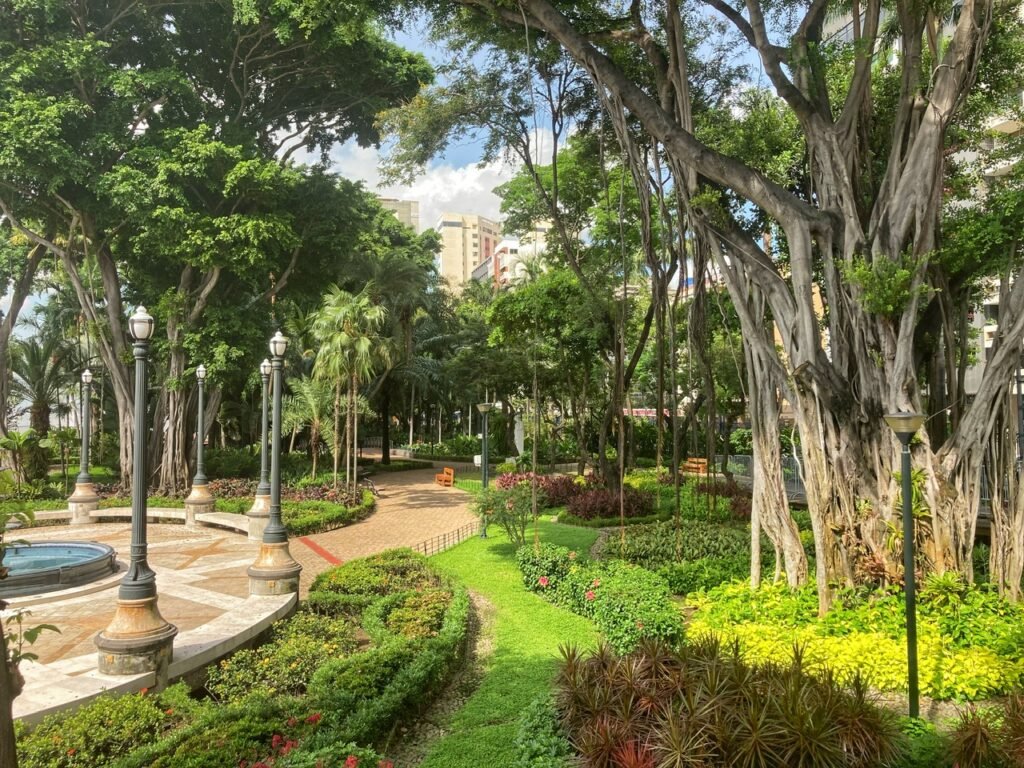
The jardines of the Malecón were our favorite parts. Lush walkways, draping banyan trees and temperatures that dropped about 10 degrees when you entered this area. Because we were at sea level near the equator, it was HOT and sticky in Guayaquil!
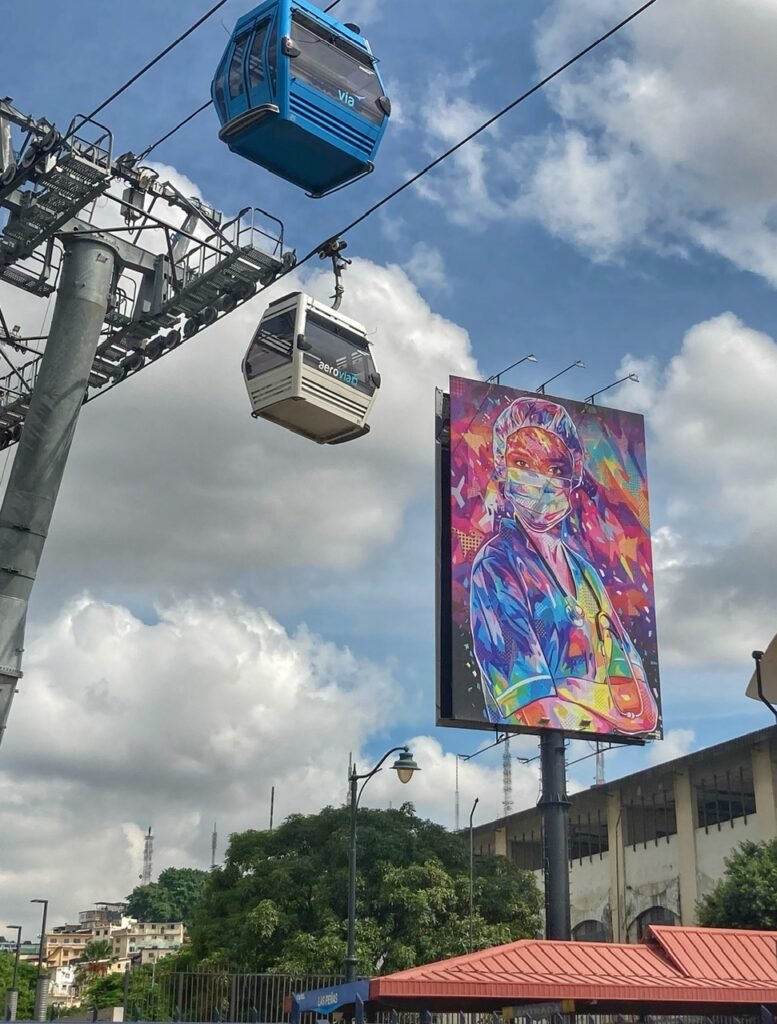
The aerovía cable car serves as part of the city’s public transportation system and costs $.70. Loved the street art paying homage to the under appreciated doctors and nurses who fought through the pandemic.
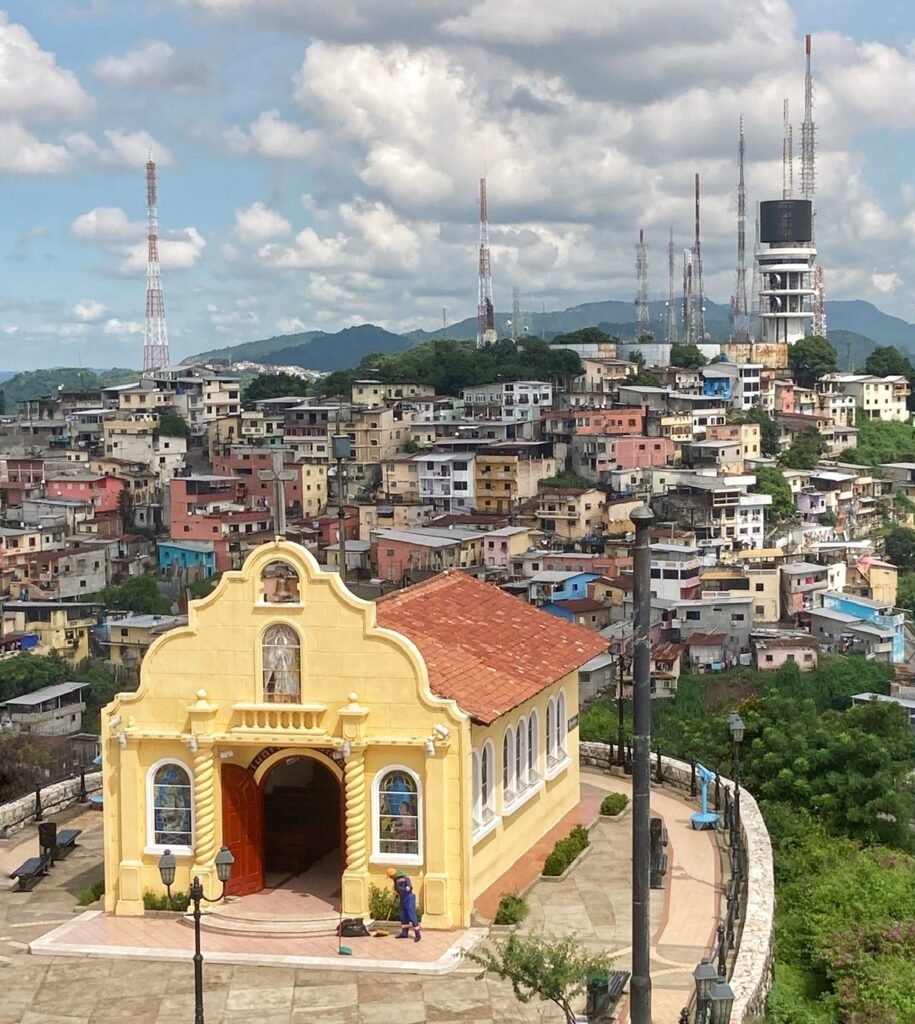
Guayaquil is often known as “the Pearl of the Pacific.” This seems a bit mis-marketed based on the fact that it’s dropped on a river, and not the Pacific which is 40-miles away. Also, in our opinion, “pearl” is a bit too gem-my. However, it was still quite deserving of the couple of nights we gave it.
One of the most popular activities in Guayaquil, is maneuvering your way up the 444 steps leading through the charming Las Peñas neighborhood to an adorable stub of a lighthouse, and a fetching view of the city. Las Peñas is sprinkled with painted homes, cute cafes and souvenir stands making it undoubtedly an iconic spot in the city.
We loved the contrast between this chapelito and Santa Ana Hill. The way the homes and roads were stacked had a bit of same flavor as Guanajuato in Mexico.
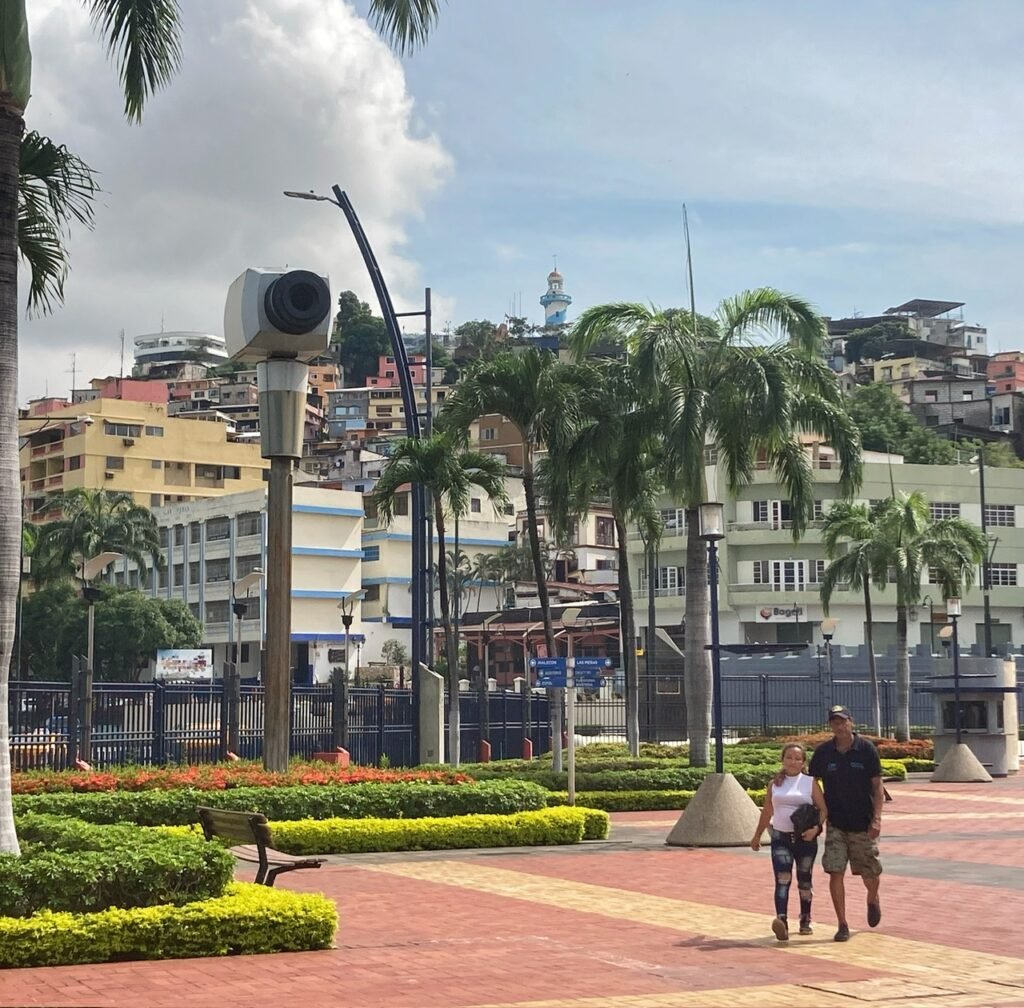
Las Peñas from the bottom. Not sure if the mega camera is real but we found it quite funny.
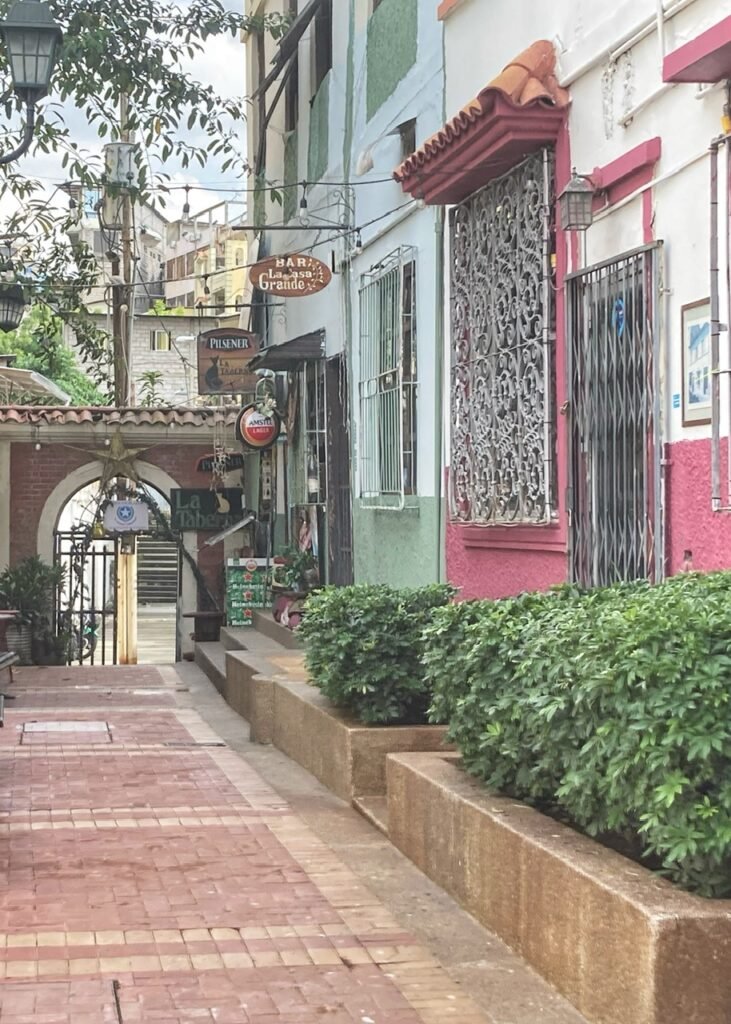
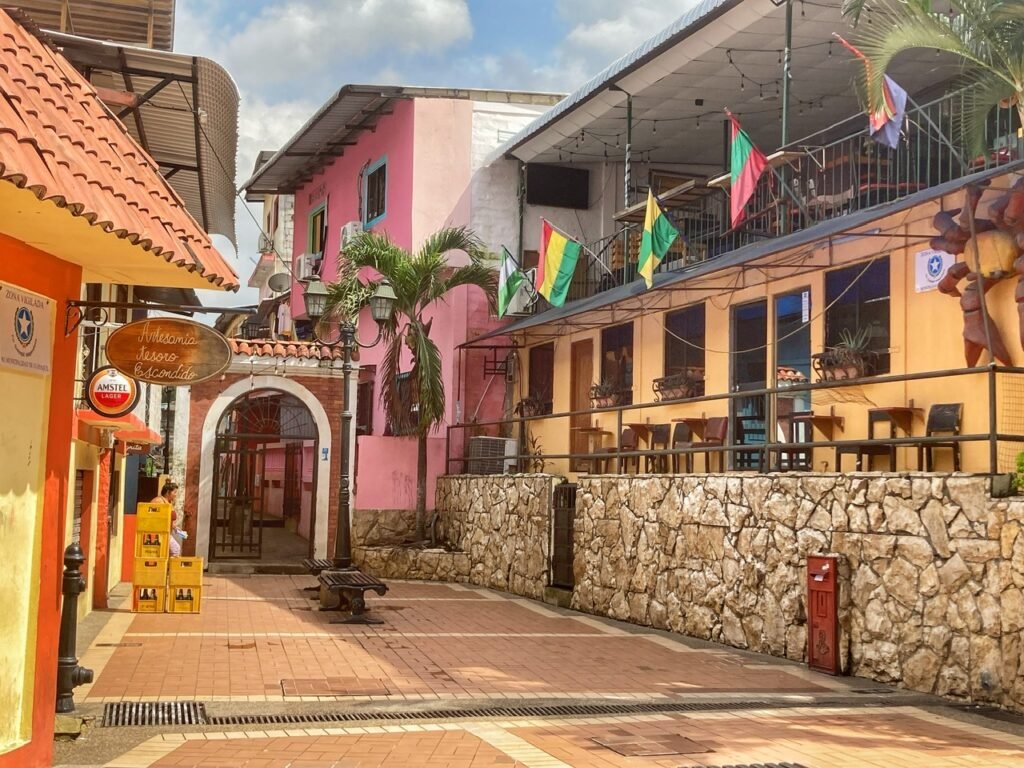
Entering Las Peñas…we went first thing in the morning and nearly everything was empty.
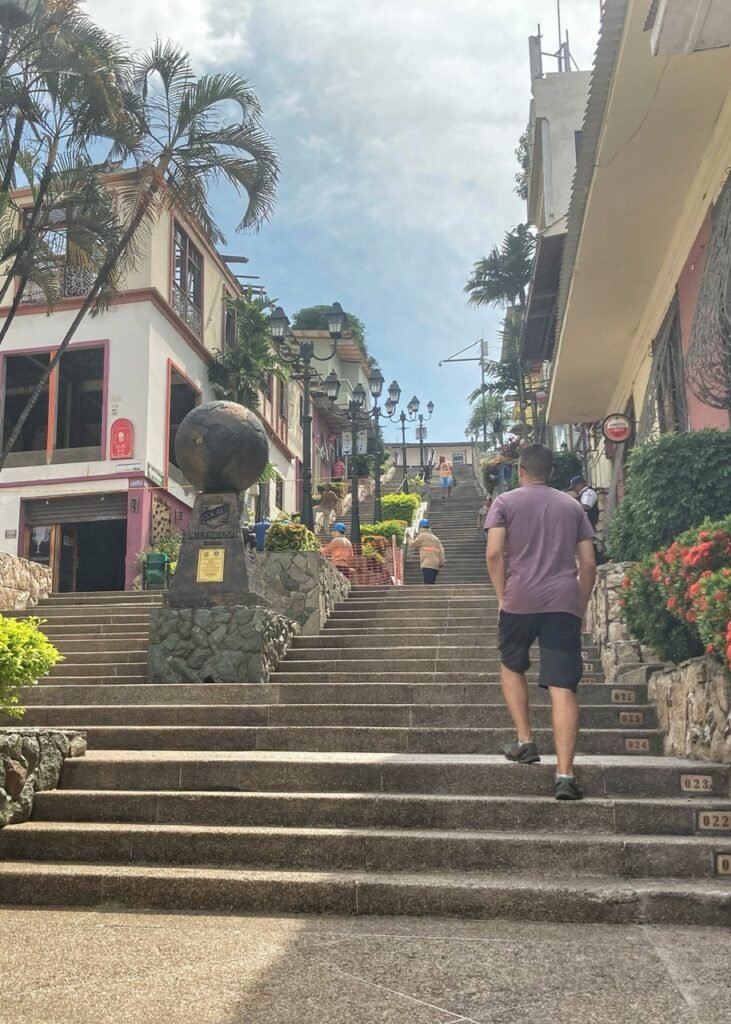
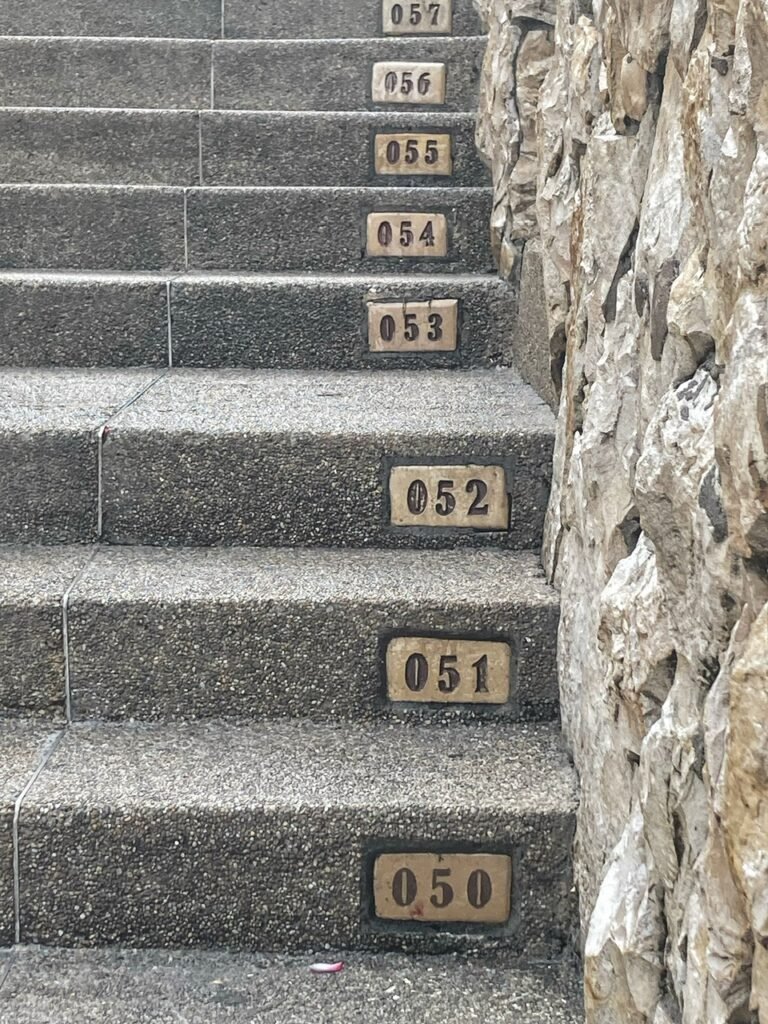
Greg begins his ascent and so he didn’t lose track of which stairs to climb, each stair is conveniently numbered. There are also many friendly security officers dotted throughout the area to keep you on track. This said, it feels incredibly safe, at least here, despite Guayaquil’s reputation of being a more dangerous city in the country and it was even in a “state of emergency” for recent criminal activity along the Ecuadorian coast. That said, they also made it clear they do not want tourists walking off the designated path. 🤨
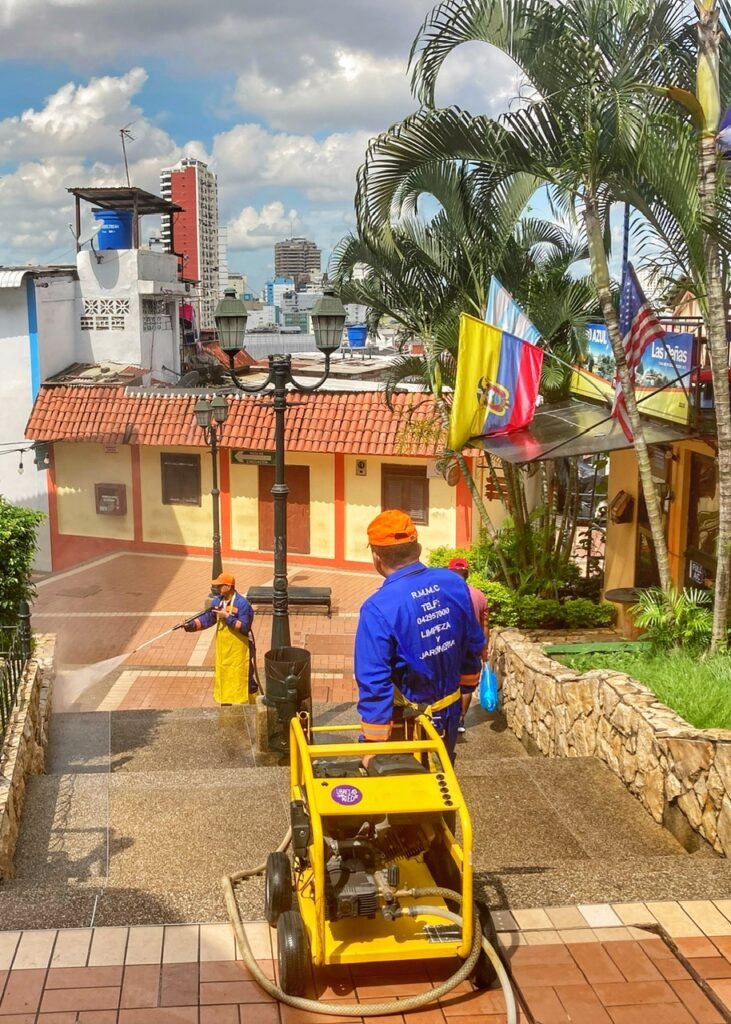
Thanks to the heat, we kept telling the cleaning guys it was fine to spray us when we walked past. Speaking of which, everywhere you looked, people were cleaning.
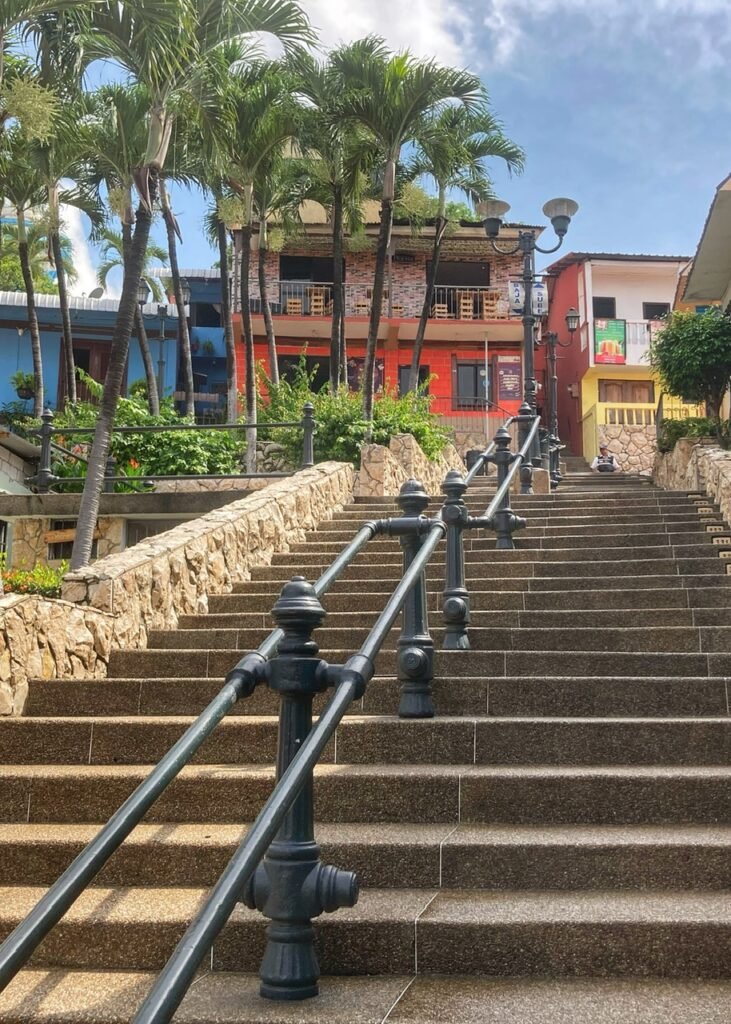
The journey continues.
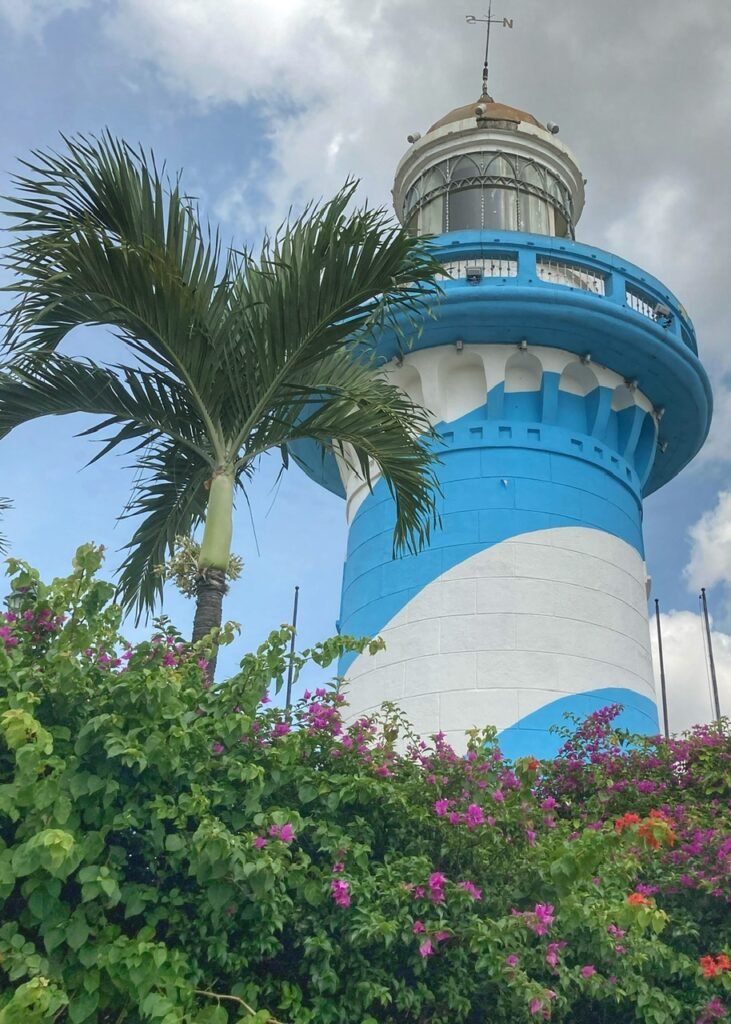
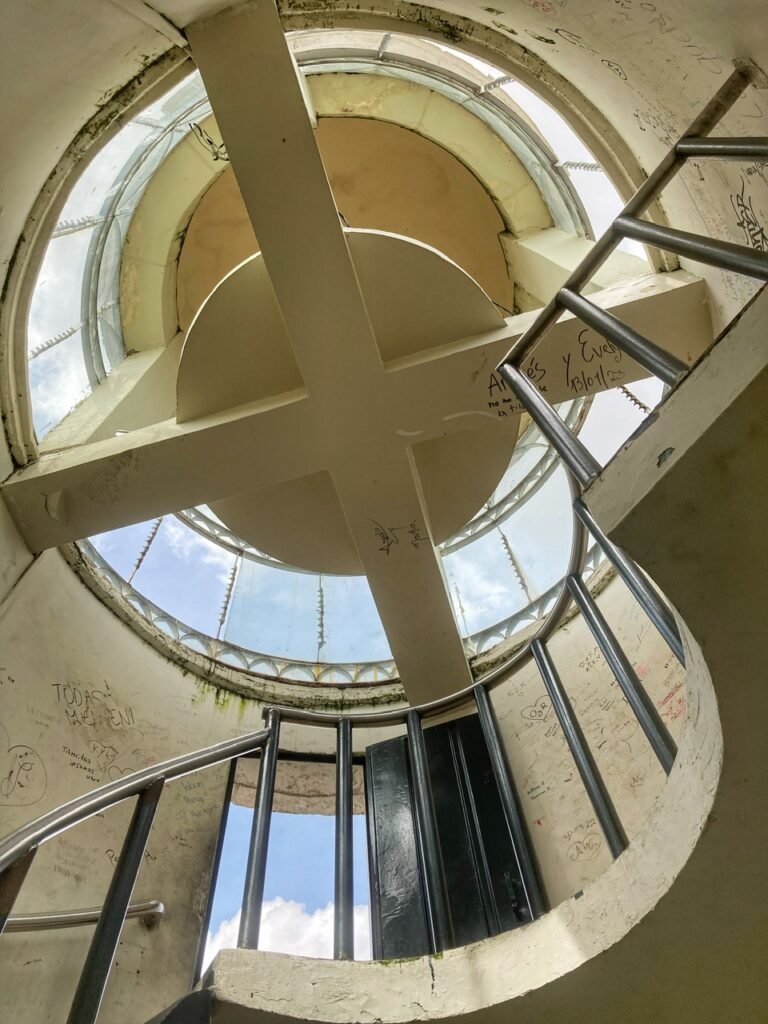
The faro, or lighthouse, symbolizes the New Guayaquil, guiding with its light the path of men. Also, it’s flanked by a series of cannons which were once used to fend off pirates (probably pearl-seeking.) Climbing the lighthouse was quick (and free!)
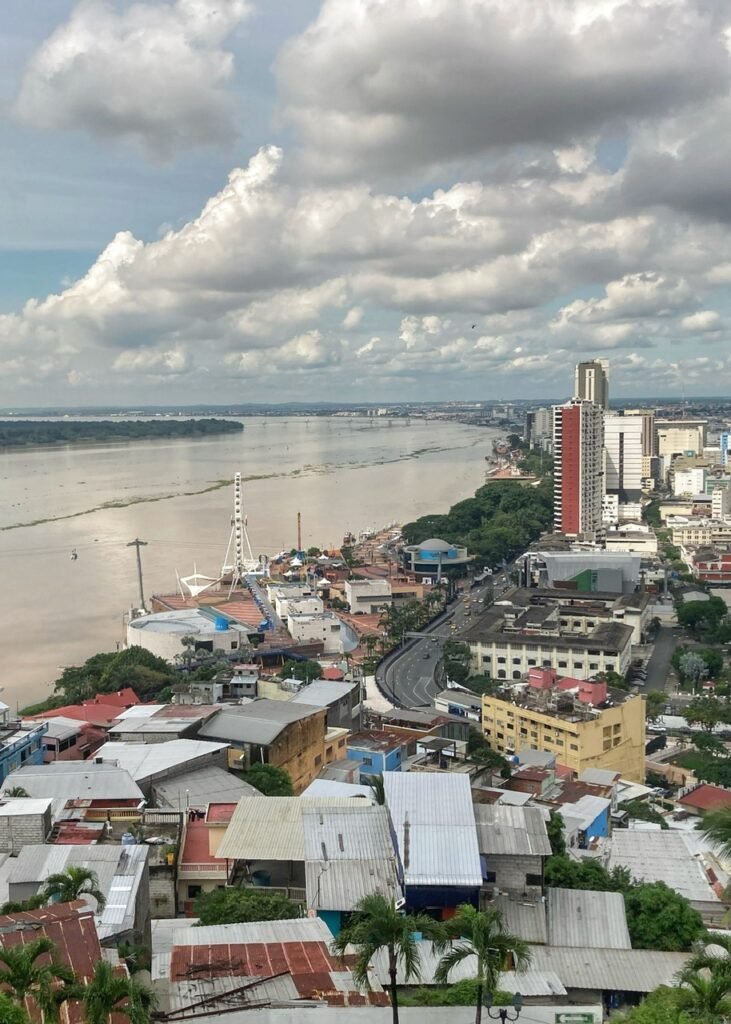
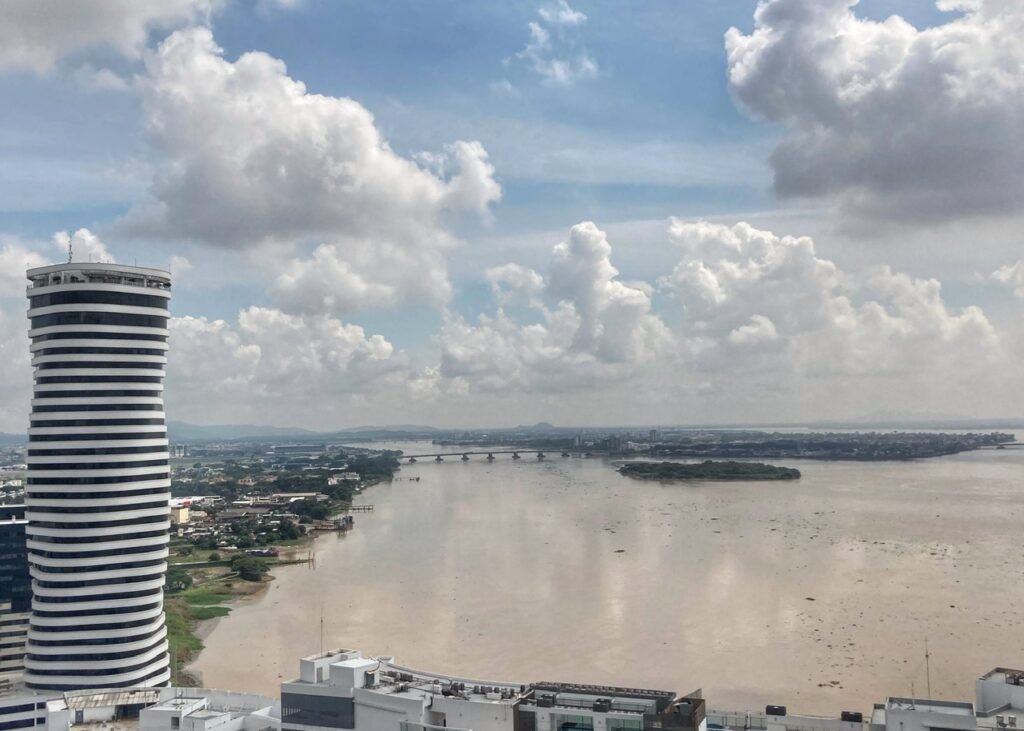
The Rio Guayas, featuring the sky wheel we had ridden the night before. Also, you can see the massive river from the other direction. The tubular building is the Hotel Wyndham which you can stay at for $121 per night. Meh. We’ll stick with free.
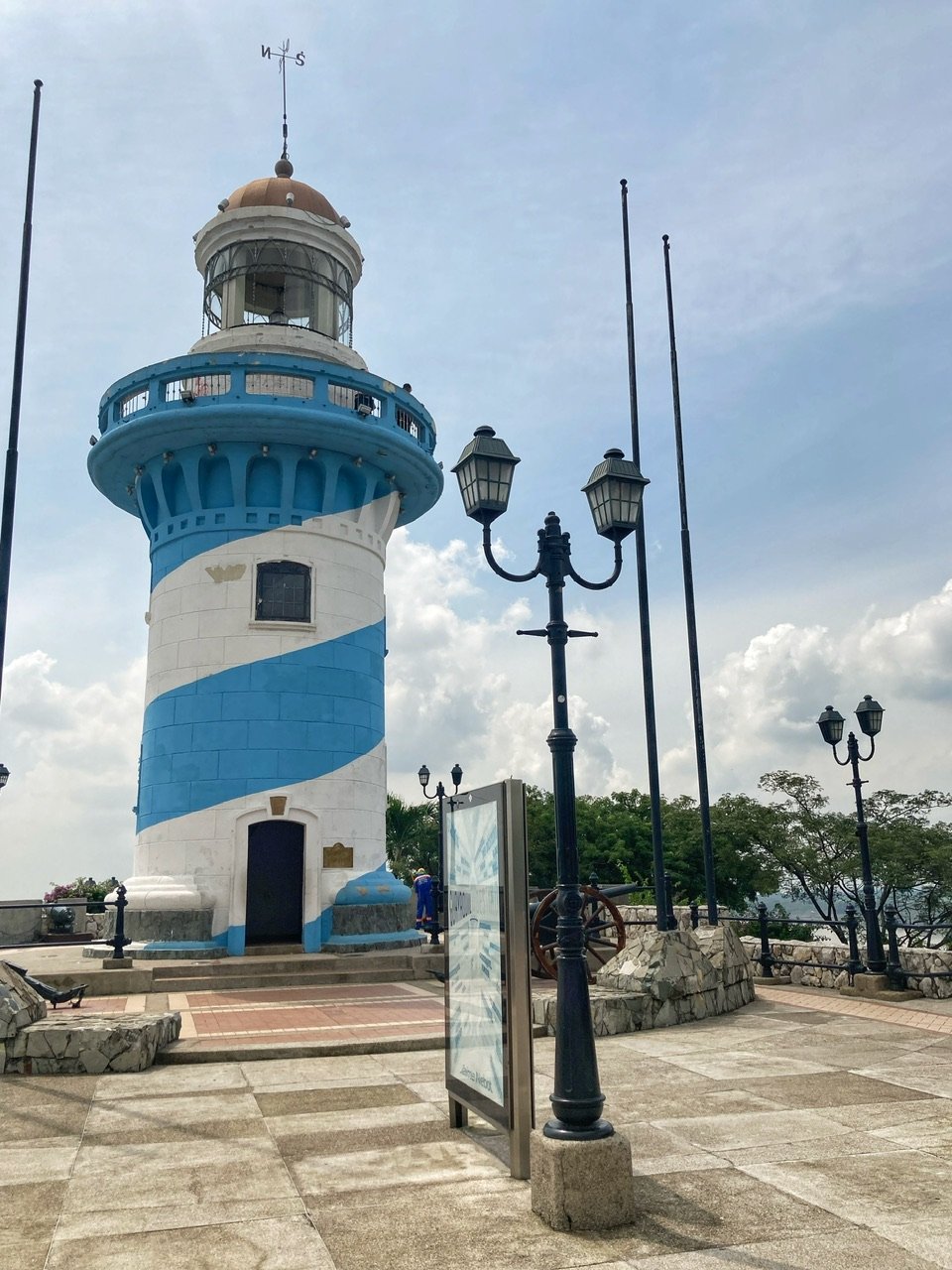
If we could pinch the cheeks of a lighthouse, it would be this one!
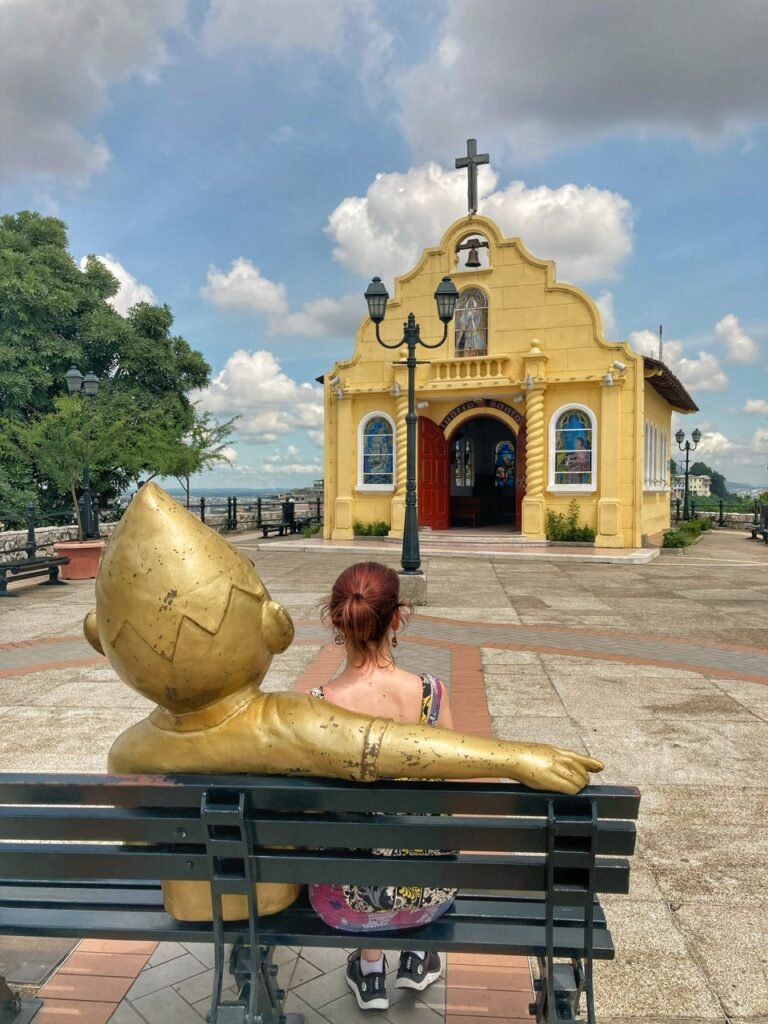
Mandy snuggles up with a new golden friend. Anyone know the story of this guy? We couldn’t find any info.

The stained glass inside the chapel definitely featured some different images than we have seen before.
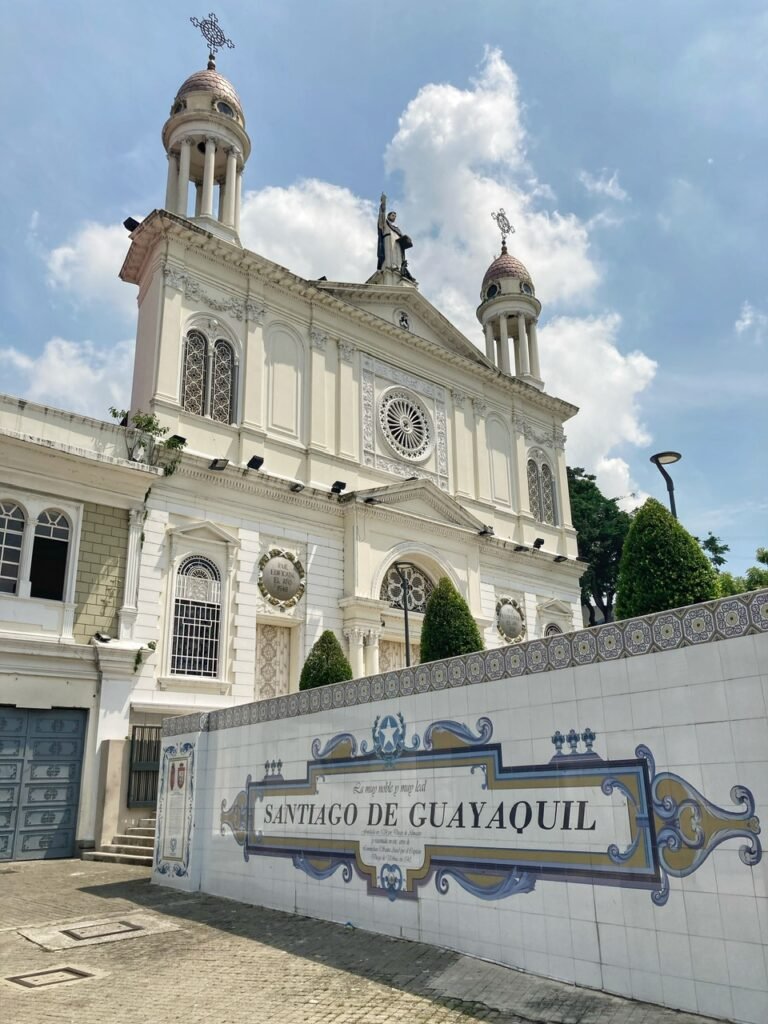
Coming off the hill, we visited the Iglesia de Santo Domingo, which is the oldest church in Guayaquil founded in 1548.
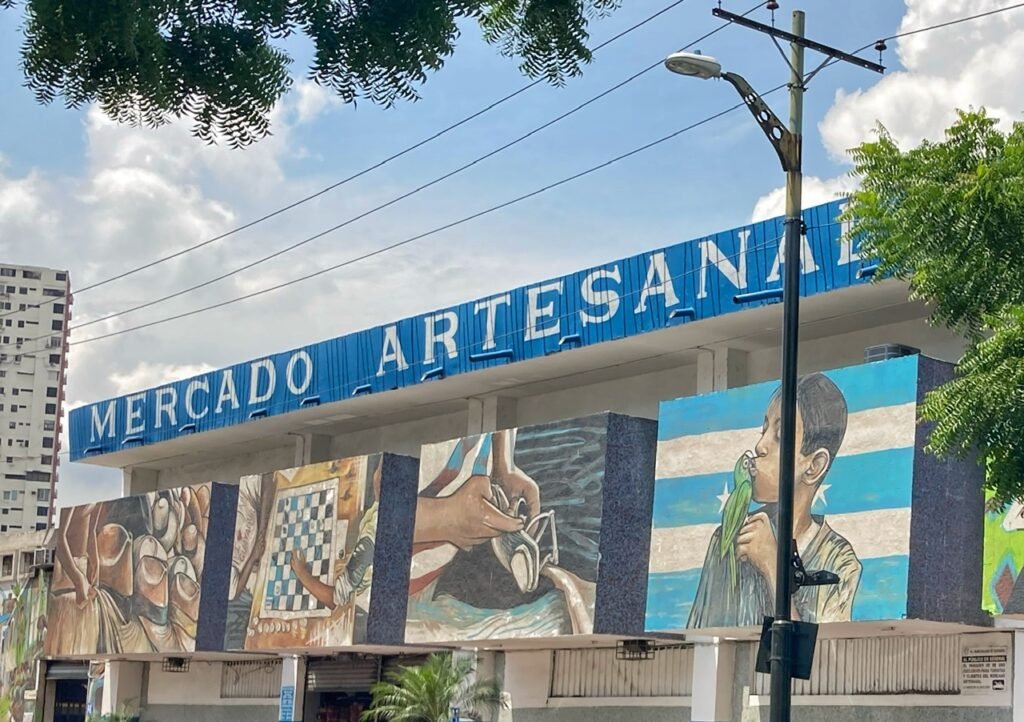

And then paid a visit to the Artesanal Market, which was packed with handmade artesanal goods and crafts from local sellers. As usual, we had to resist temptation.

Instead, we took our temptation to La Casa Vegetariana for some healing portions of ramen and noodles, which covered us for lunch and dinner at $4.99 a plate. (Yes, like Panama, Ecuador also uses the USD for currency and has since 2000 thanks to a deep economic crisis at the time.)

Moving on, in Parque de Las Iguanas, one can find clusters of waddling iguanas with massive claws being pawed regularly by curious children, a gorgeous gothic catholic cathedral and a few other surprises….
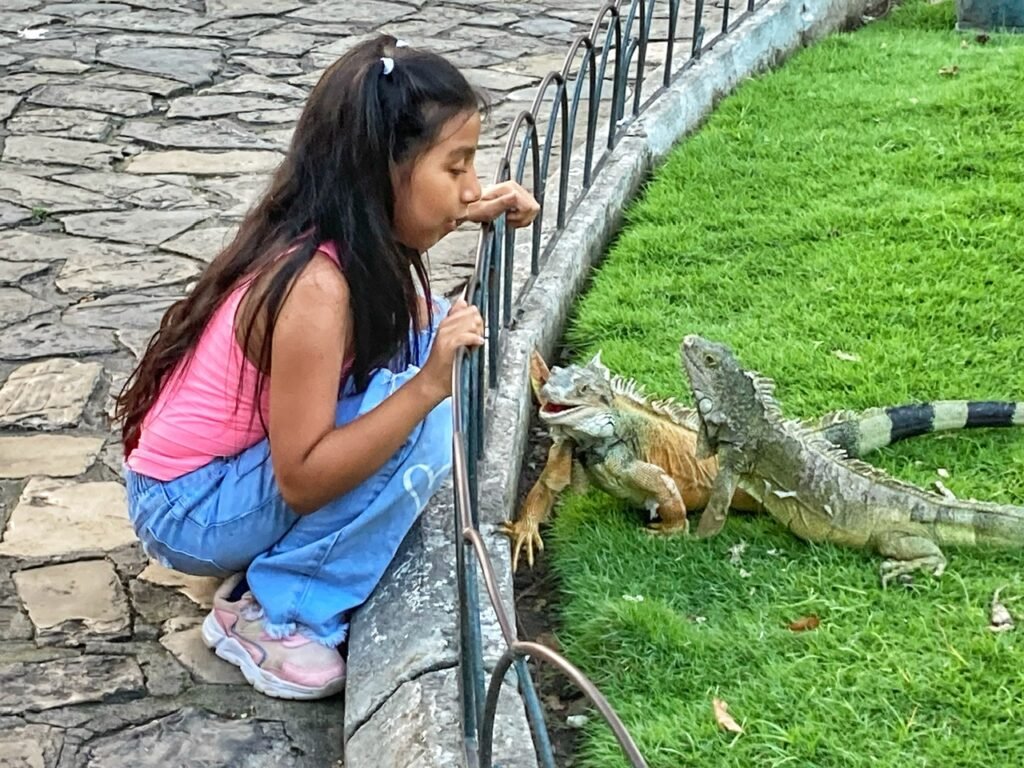
What do you think they’re talking about? His face. Her face. Priceless.
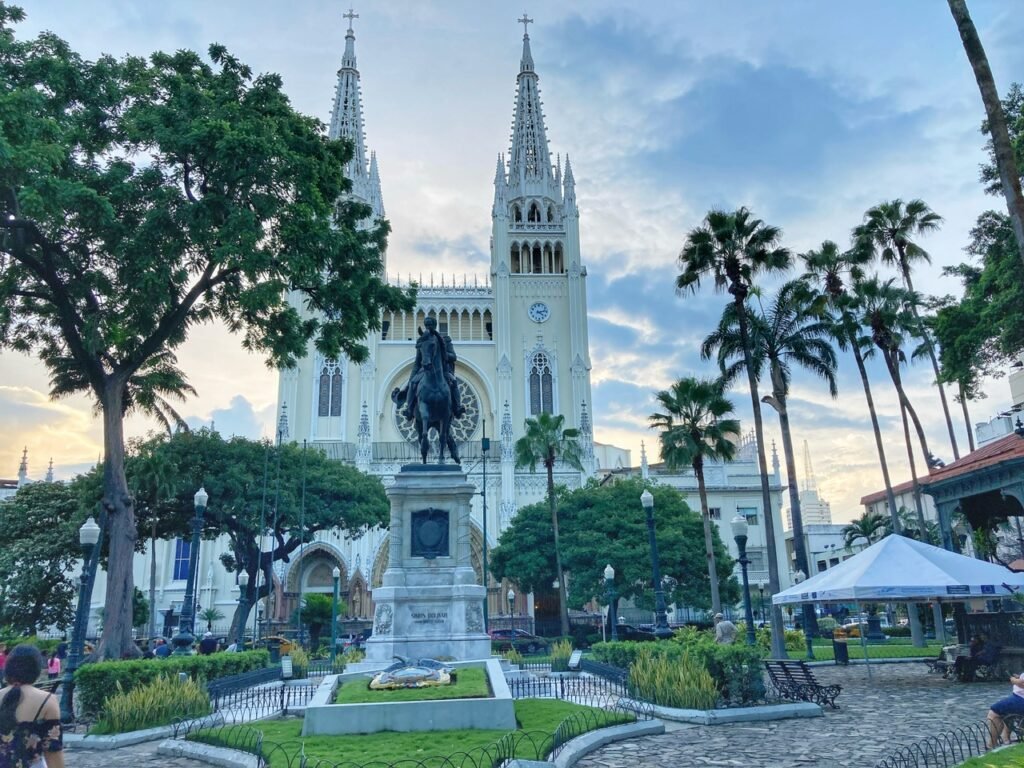
The park is also called Parque Bolivar, dedicated to Simon Bolivar, the Venezuelan leader who led what are currently the countries of Colombia, Venezuela, Ecuador, Peru, Panama and Bolivia to independence from the Spanish Empire.
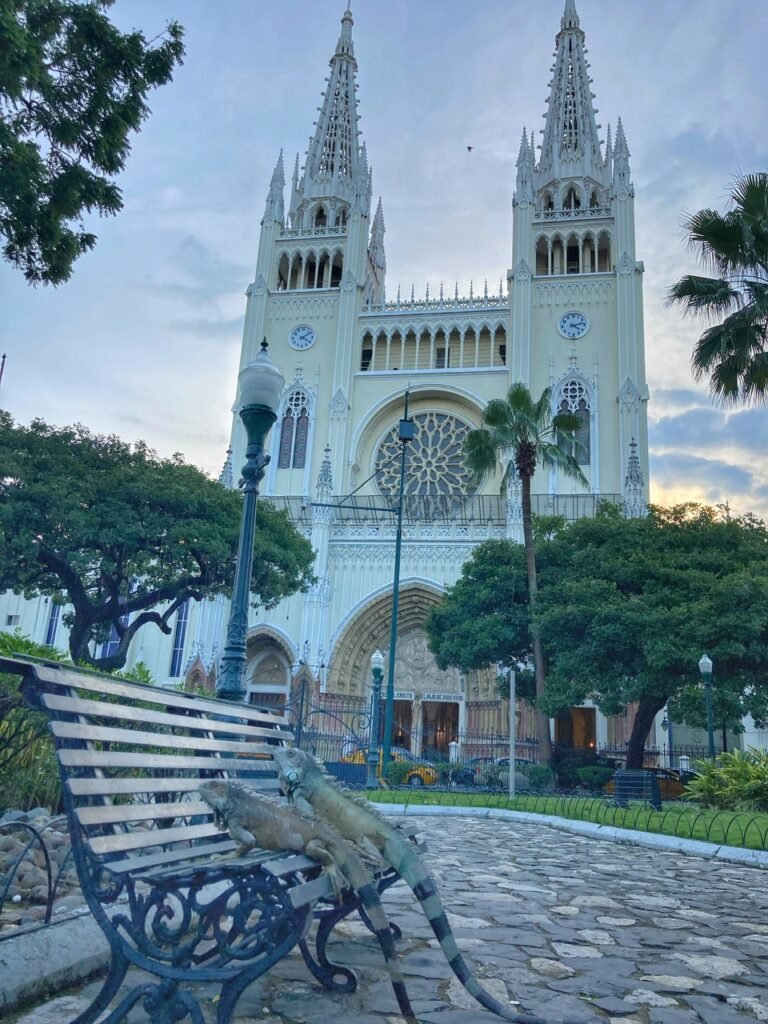
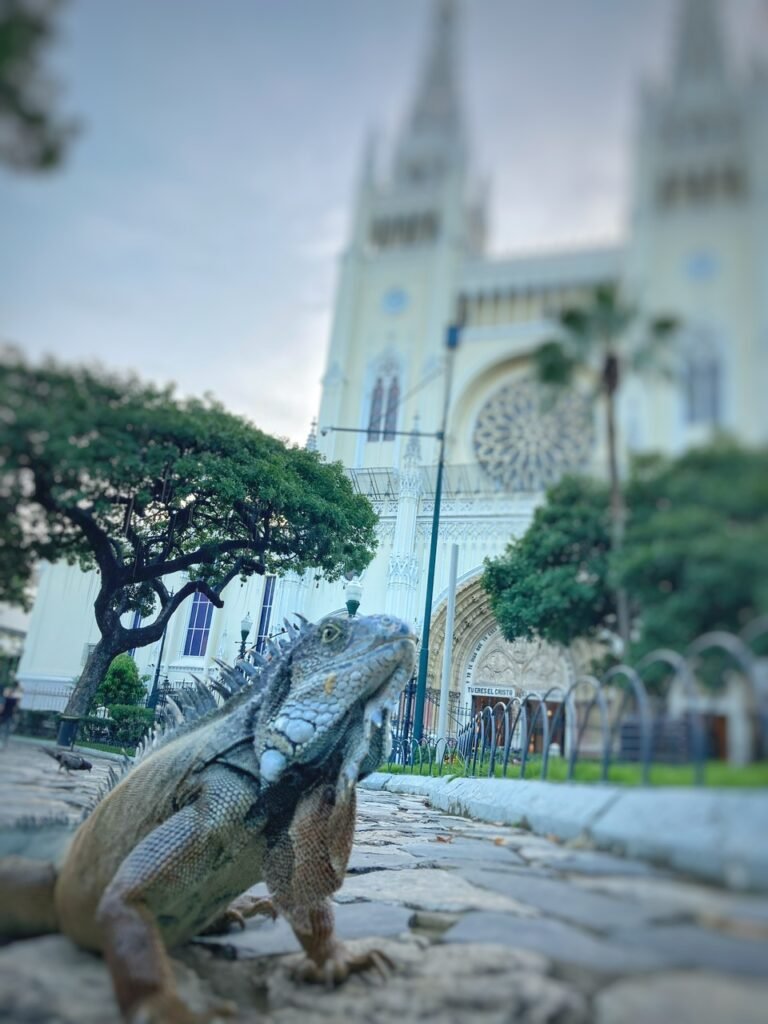
In the fading evening light, this was the first pair we spotted and they surprised us a bit when we turned the corner. 🤣 Some seemed to be deep in though and clearly not the least bit afraid.
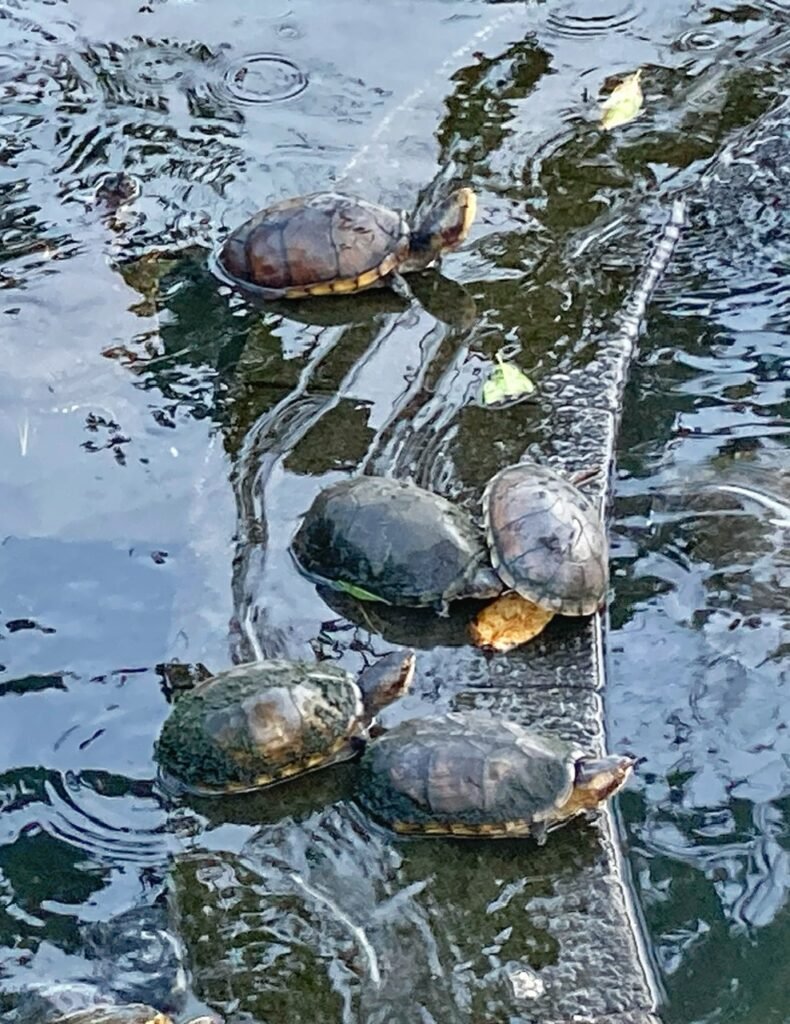
Fortunately the turtles were protected from grabby hands inside of a secure pond.
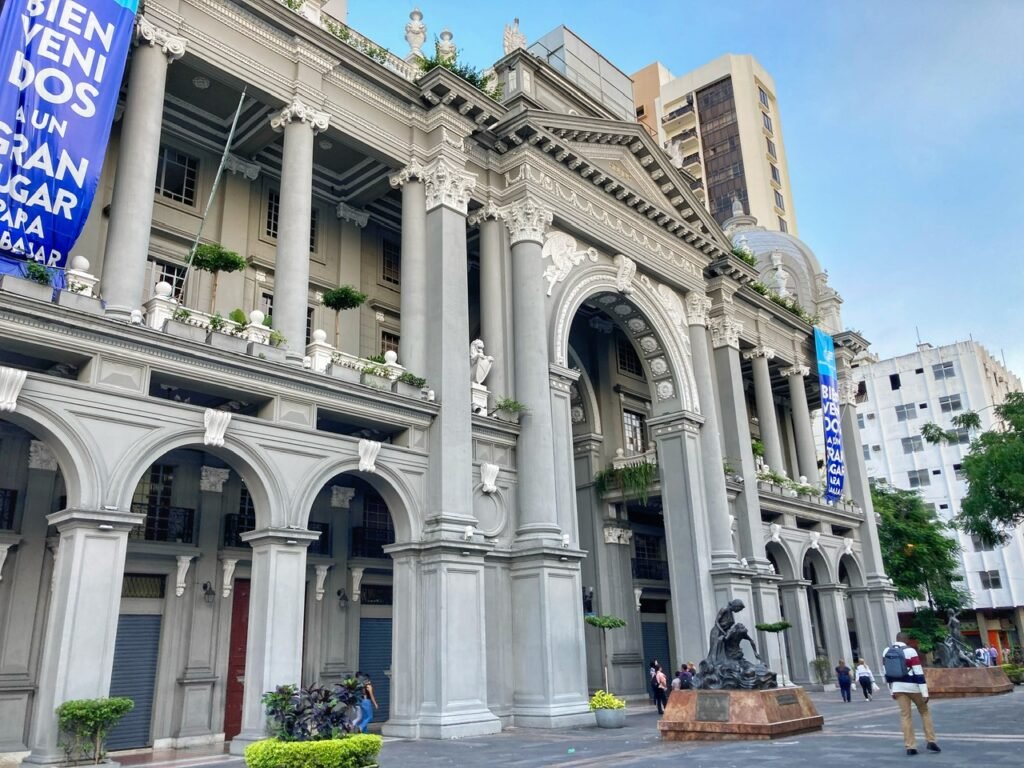
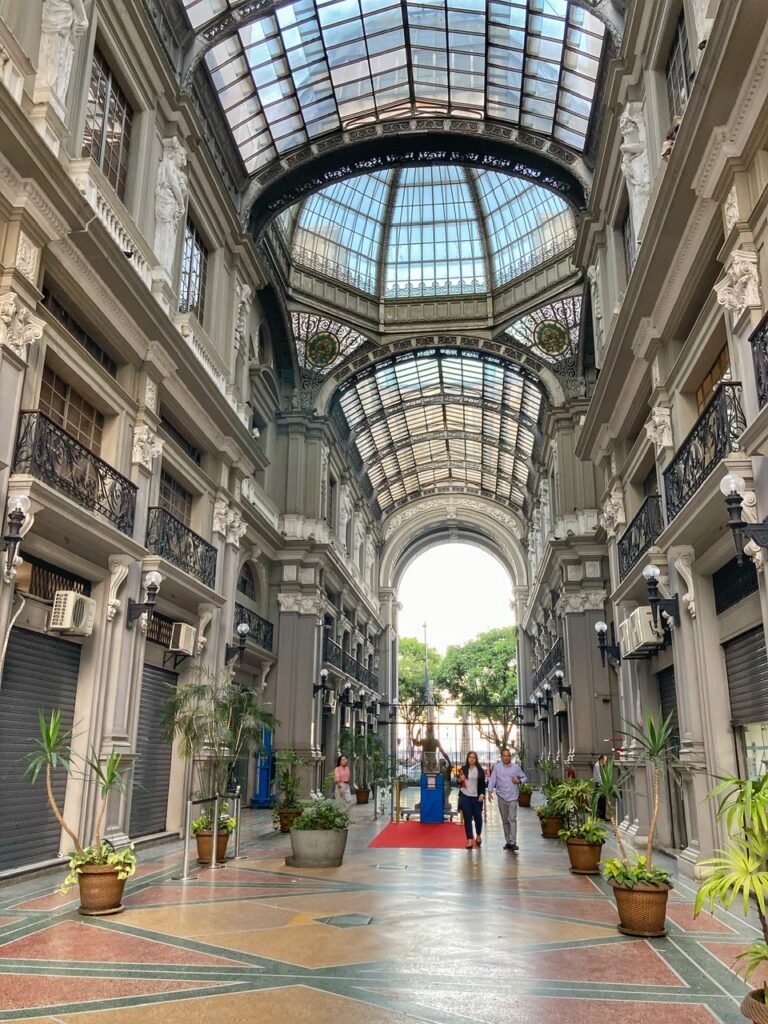
The neoclassical and baroque style municipal building dating from 1921 and looks like it fell out of Italy…
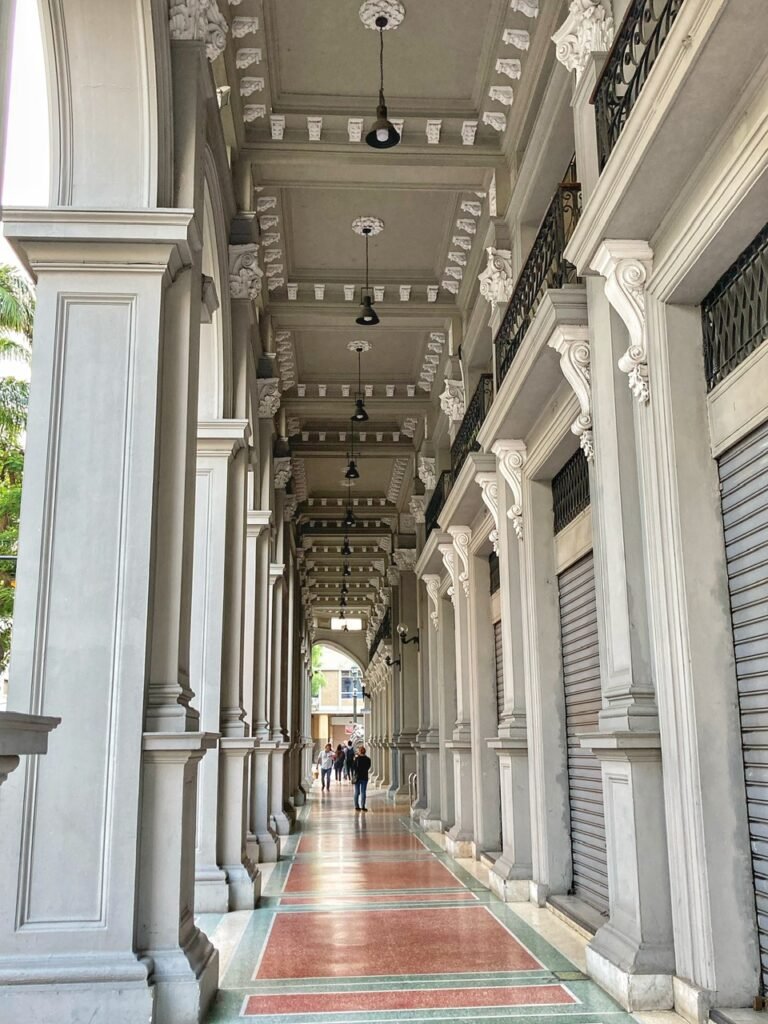
…and featured sweeping arcades on all four sides. Really beautiful!

This octagonal, dome-topped clock tower built in the 1930s is a local, iconic landmark.

